“World-class” describes everything about winter in Aspen, from the holiday events to the hearty cuisine to the after-parties that are inevitably happening just around the corner. But all that really matters in Aspen in winter are the mountains. Aspen has some of the most renowned skiing and snowboarding in the world across four ski resorts. And if for some reason you’ve come all the way to Aspen and don’t want to ski, well, you aren’t lacking options for alternative winter adventures. Here’s everything you need to know about the ski scene in Aspen, plus all the other winter activities you can try out between runs.
Skiing and snowboarding
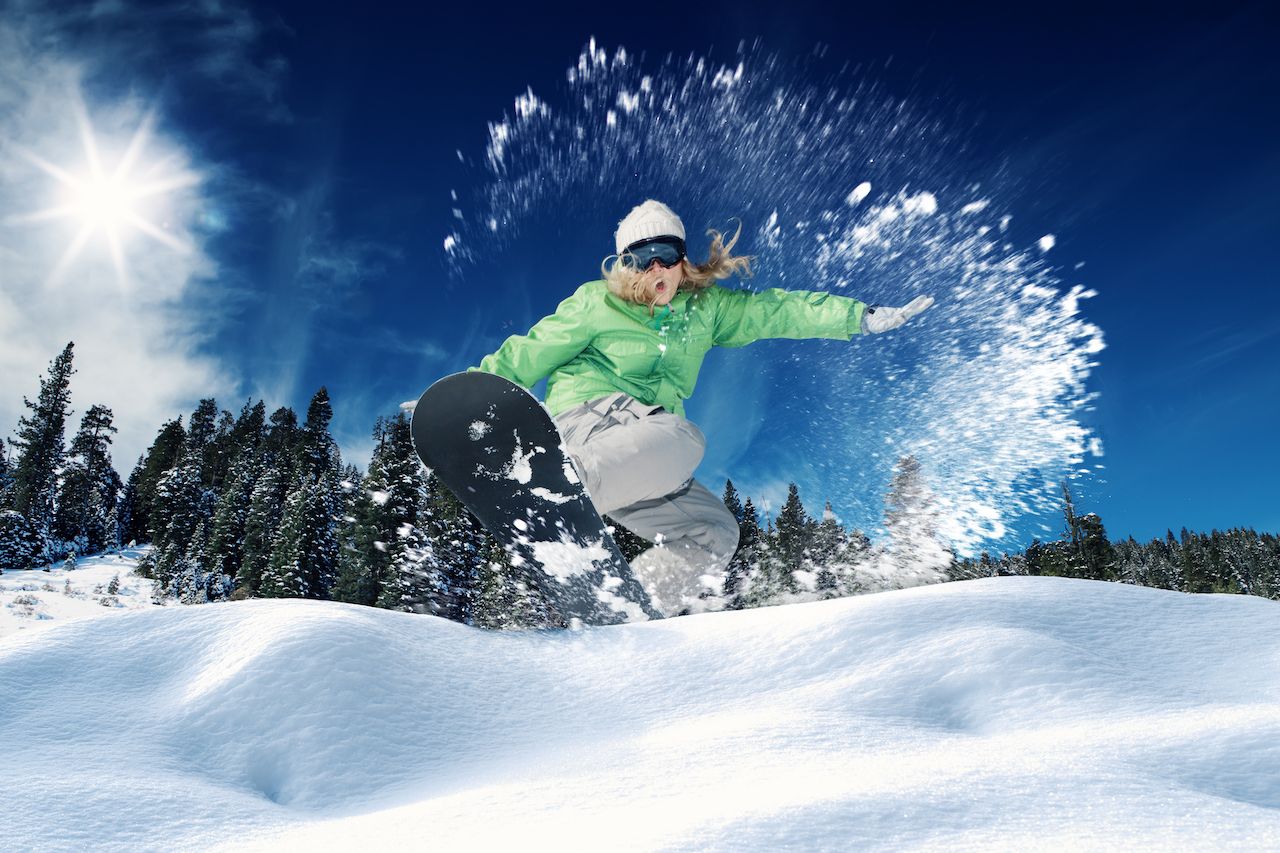
Photo: Ersler Dmitry/Shutterstock
Winter in Aspen is all about getting on the mountain. One lift ticket grants you access to four mountains: Aspen Mountain, Snowmass, Aspen Highlands, and Buttermilk — all easily accessible on an interconnected free bus route. Aspen Mountain is the main ski resort and is connected to the town of Aspen by the Silver Queen Gondola. It’s here that you’re most likely to see celebrities or have a casual run-in with someone from a night out on the town. Note, however, that there are no beginner runs here. It’s all intermediate pistes and above. The summit of the Silver Queen Gondola offers unparalleled views of the surrounding mountains, as well as a view of the extensive Highlands Bowl at Aspen Highlands, making it an ideal place to scope your line should the legendary hike to its top be in your future.
Snowmass is the biggest of the four resorts and also the farthest from Aspen proper, though only separated by a 15-minute bus ride. Snowmass has its own town at the base, Snowmass Village, which offers other activities like ice skating and tubing. Snowmass offers beginner runs, in addition to expert terrain, making it a good option if you have a large group with mixed levels of experience.
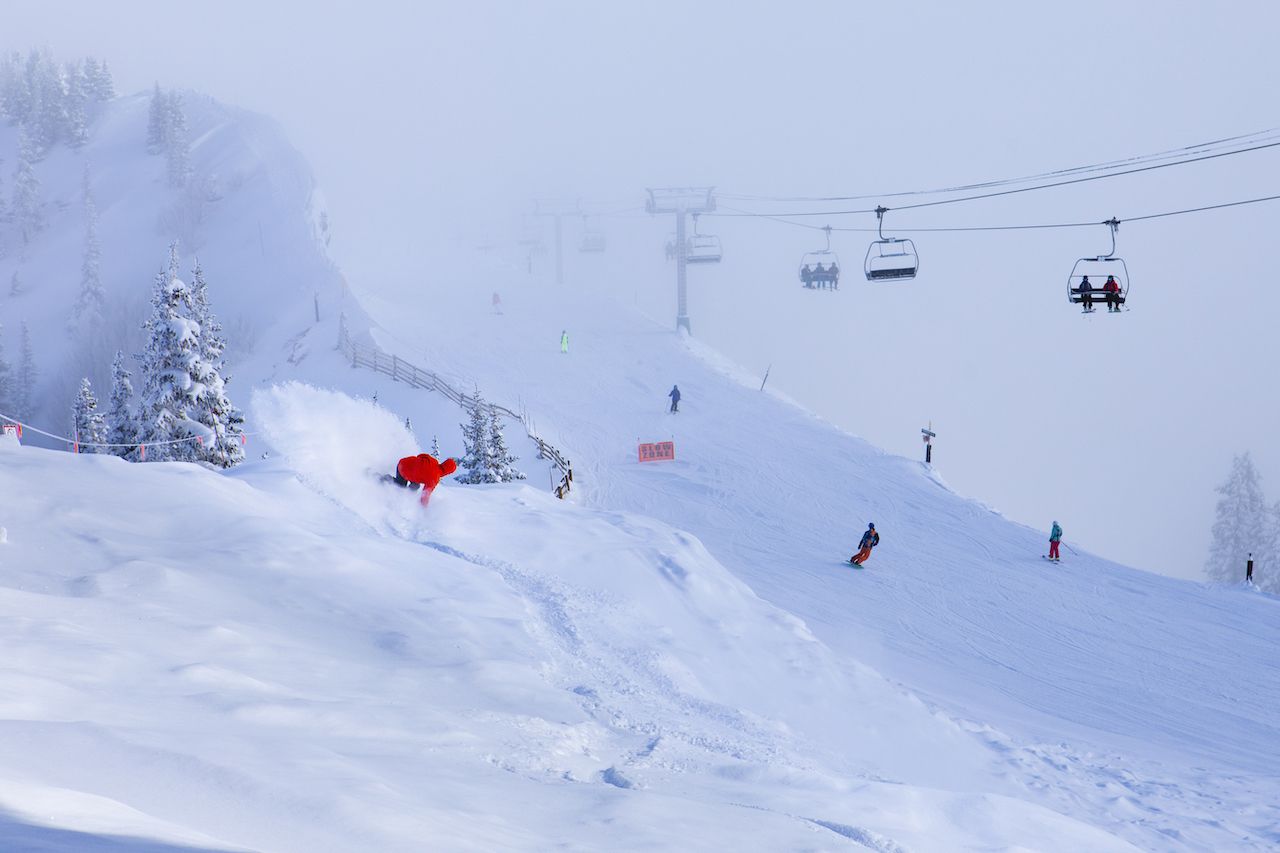
Photo: Aspen Snowmass
Aspen Highlands and Buttermilk sit between town and Snowmass Village. Aspen Highlands is the least-crowded of all the resorts, making it popular with locals. It’s great for people who don’t want to feel pressured by crowds, though it also offers extensive expert terrain for pros looking to spread out. Buttermilk is where the terrain park crowd hangs out, and it’s most famous for playing host to the iconic Winter X-Games.
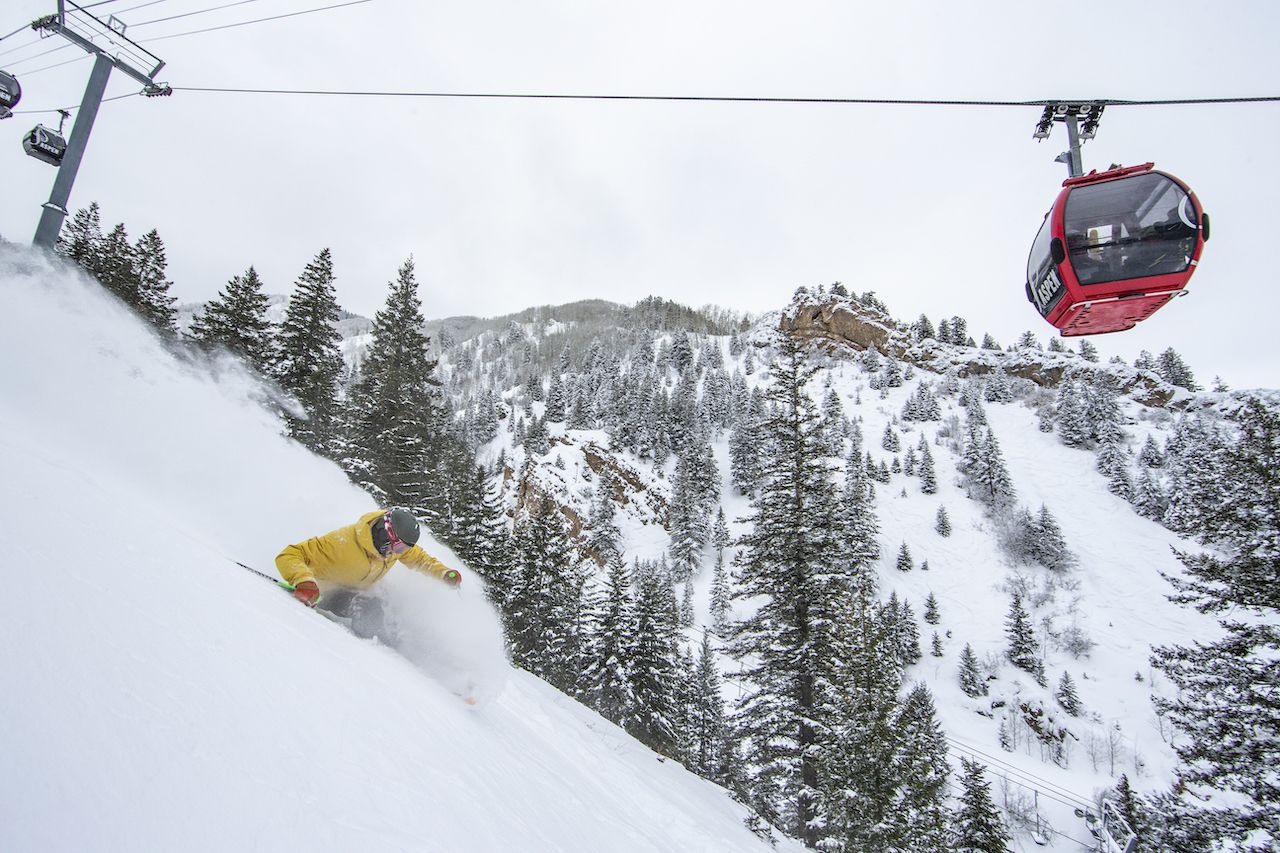
Photo: Aspen Snowmass
Lift passes — To avoid an immediate bump in heart rate and the possible ruin of your entire vacation, never — ever, for any reason — walk up to the ticket window in Aspen to buy a lift ticket the morning you plan to ski. If you do, you’ll shell out no fewer than $200 per person, per day, and this price does not include rentals or food. A few minutes of advance planning can keep at least the cost of lunch in your pocket, if not dinner and a show as well.
- Liftopia has tickets for as low as $149. If visiting for one day, this is generally your best bet for a discounted lift ticket.
- Buy online, in advance, and for multiple days. Save a few bucks by buying online at least seven days before the day you plan to ski. If you plan to ski more than one day, buying a two- or three-day lift ticket will knock another $10 per day off the price.
- Get an Ikon Base Pass. An Ikon Base Pass offers access to 41 ski destinations around the world, including up to five total days at Aspen’s four resorts, for under $400. If you plan to ski more than three days, or plan to do other ski travel in the same season in Colorado or elsewhere, this is the best way to save massive money on lift tickets — and avoid waiting in line at the window.
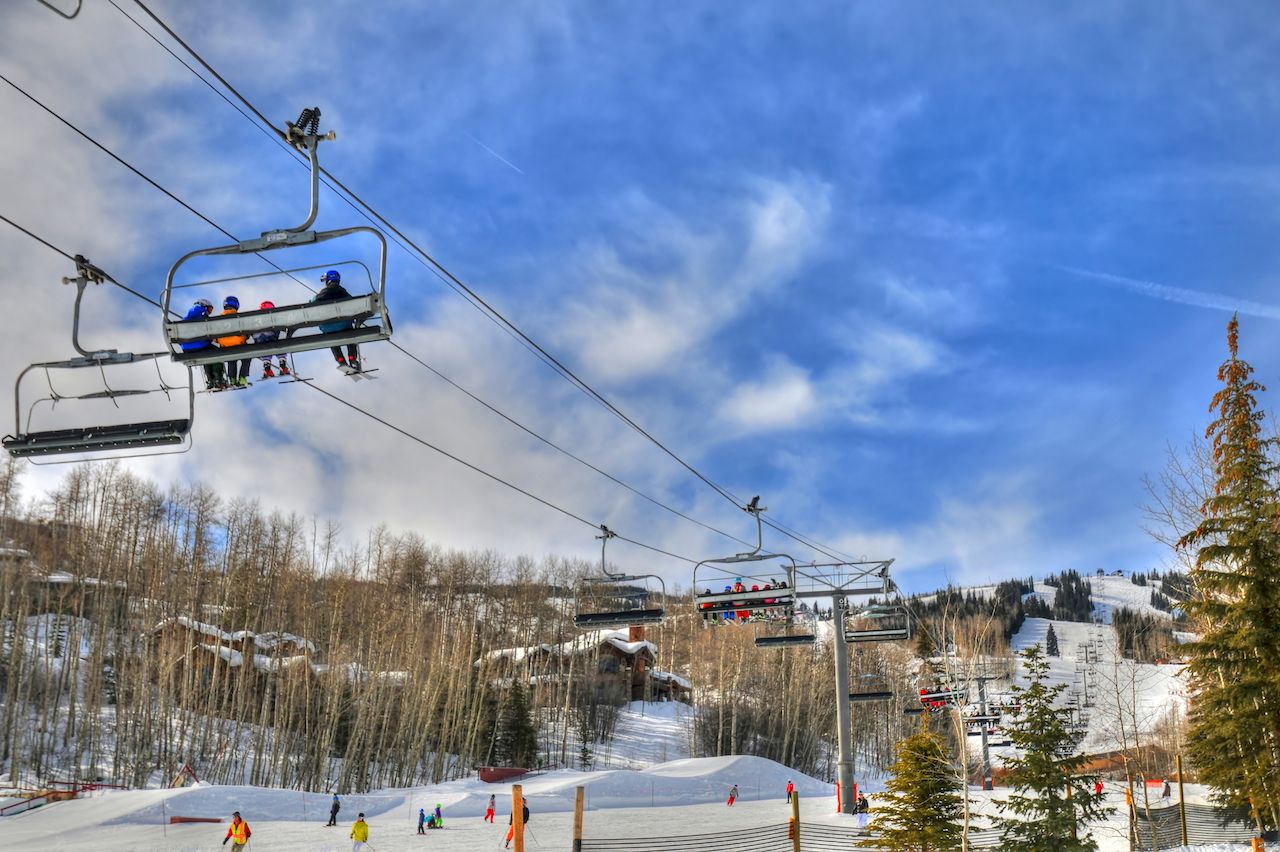
Photo: The World in HDR/Shutterstock
Family skiing — Being the largest of the four Aspen ski hills, Snowmass has the most diverse terrain, making it the most family-friendly because there is more terrain available for beginner and intermediate skiers than on the other three. Both the Two Creeks Lift and Elk Mountain Gondola lead to a plethora of greens and blues, and when the fam is ready for an adventure, take them up Village Express for lunch at Sam’s and a long, winding run back down to the base.
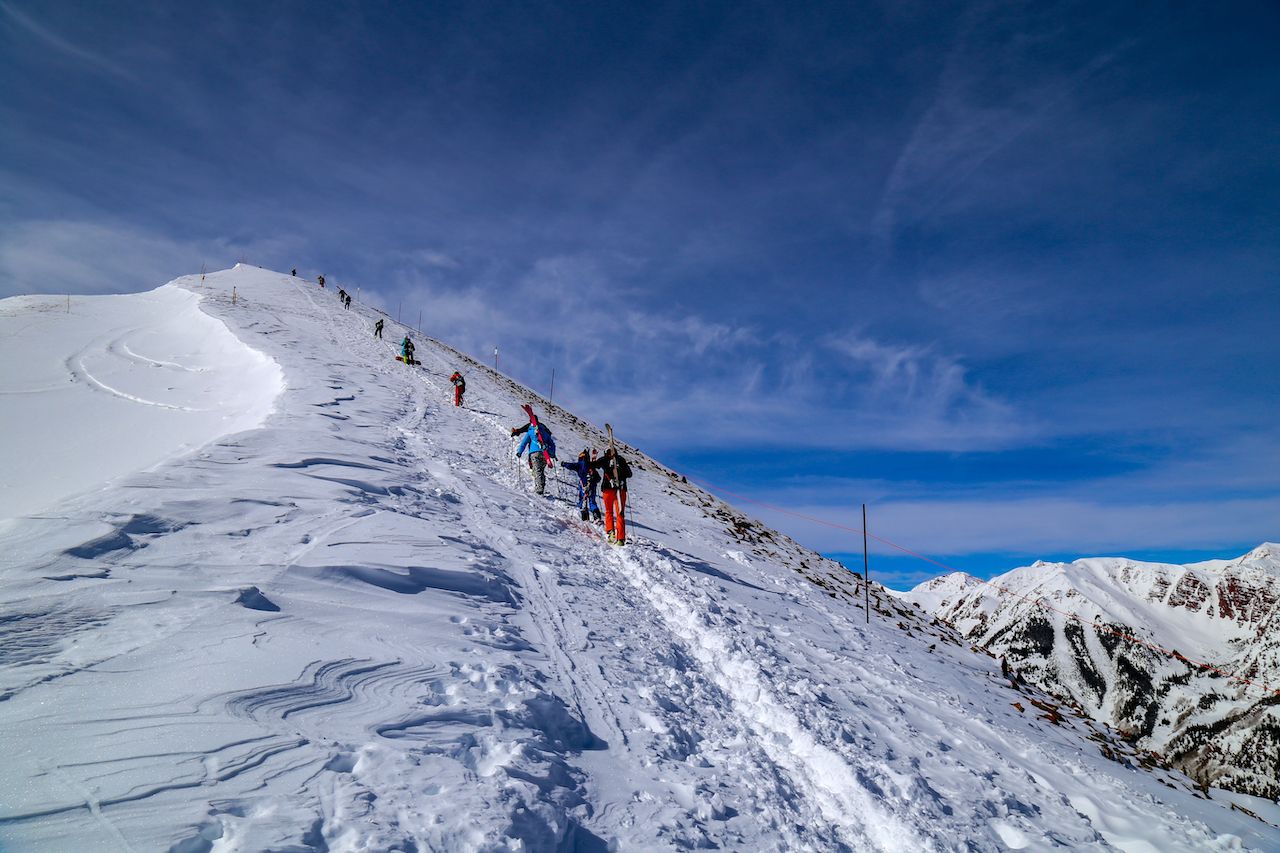
Photo: CSNafzger/Shutterstock
Expert skiing — Snowmass is also home to the most technical terrain, with the 12,500-foot summit of The Cirque dropping into a series of steep and gnarly descents. The High Alpine lift also services expert pistes at Snowmass. But to really test your limits, the best bang for your buck is to hike up Highlands Bowl at Aspen Highlands, one of Colorado’s most famous ski runs. The hike takes about 30 minutes and leads to an expanse of drop-in points running through the steep, wide-open bowl face, as well as through tight glades. Aspen Mountain is lined with advanced and expert terrain off its 11,212-foot summit, as well as the F.I.S. lift.
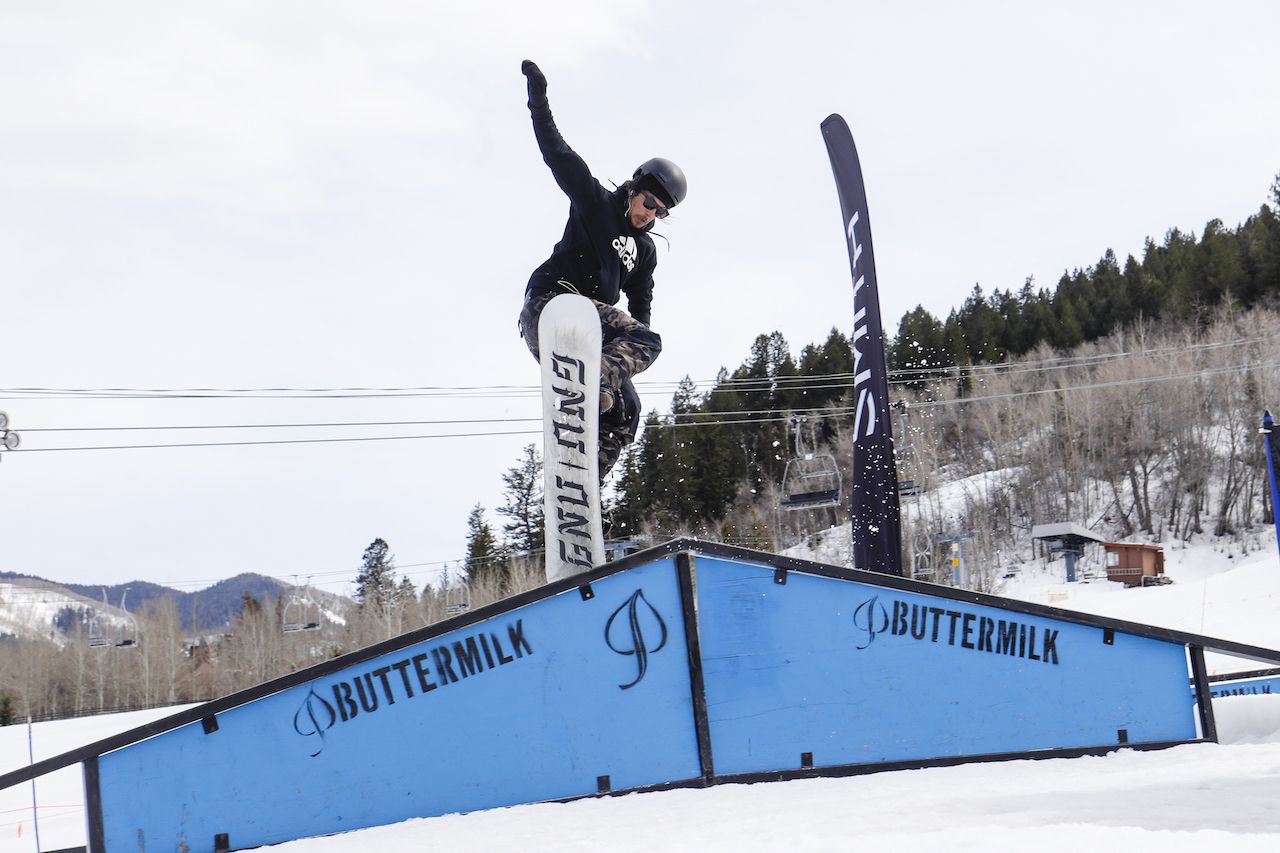
Photo: Aspen Snowmass
Terrain parks and freestyle — Buttermilk Mountain hosts the annual ESPN Winter X-Games, one of the most famous freestyle competitions in winter sports, every January. As such, it is Aspen’s hub for terrain park development and offers parks for skiers and riders of all levels. Head to the top of the Little Teaser lift, and find your fancy all the way down to the base. To hone your skills on smaller features, visit Red’s Rover off West Buttermilk Express lift. Buttermilk also has the Eagle Hill Cross Course, Aspen’s only cross track.
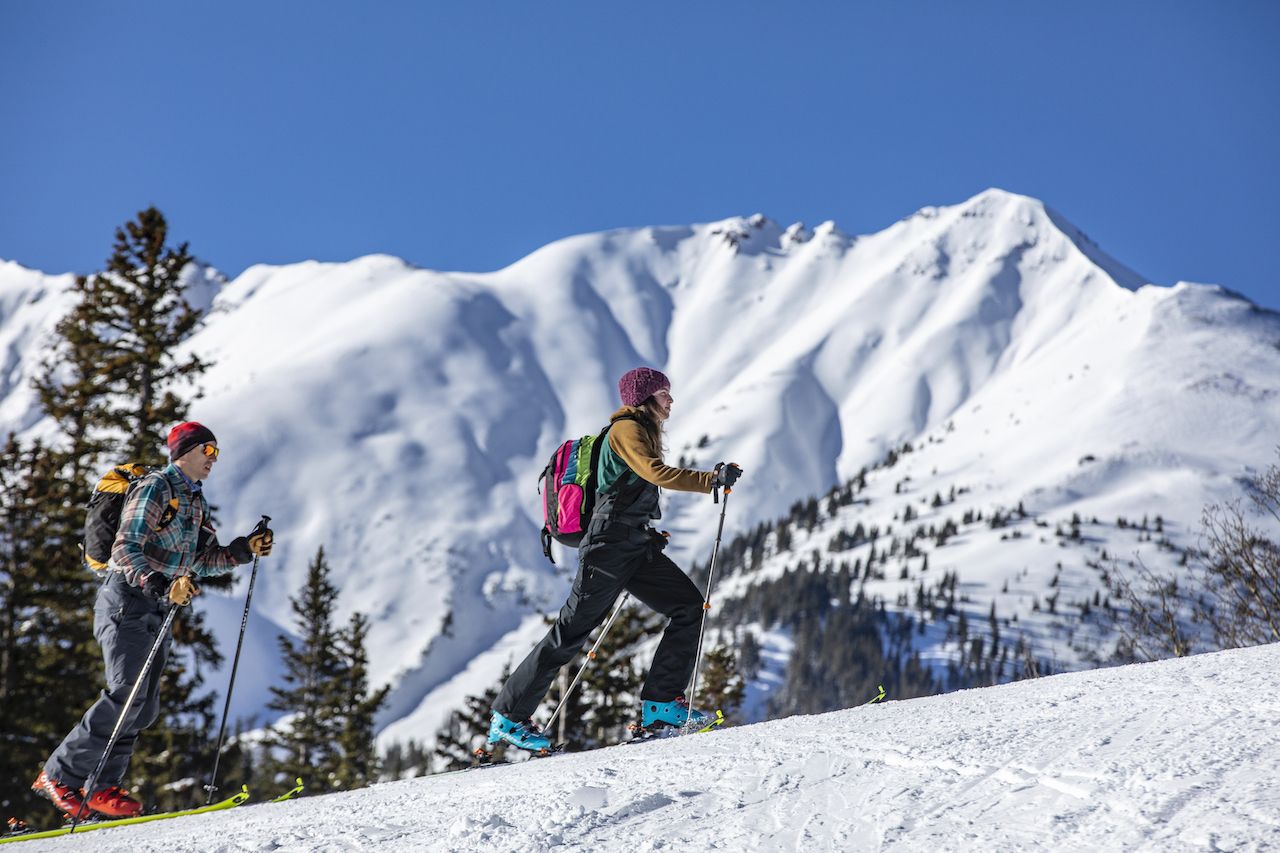
Photo: Aspen Snowmass
Uphill skiing — This grueling method of skiing is gaining traction at resorts across the country, as well as in the backcountry. It requires putting “skins” on the bottom of a pair of skis or onto a transitional snowboard known as a splitboard and skiing uphill. Aspen has a more open policy towards uphill access than most major resorts, allowing it at all four of their mountains. On Fridays, you can uphill to the Cliffhouse on Buttermilk Mountain for a cheap hot breakfast.
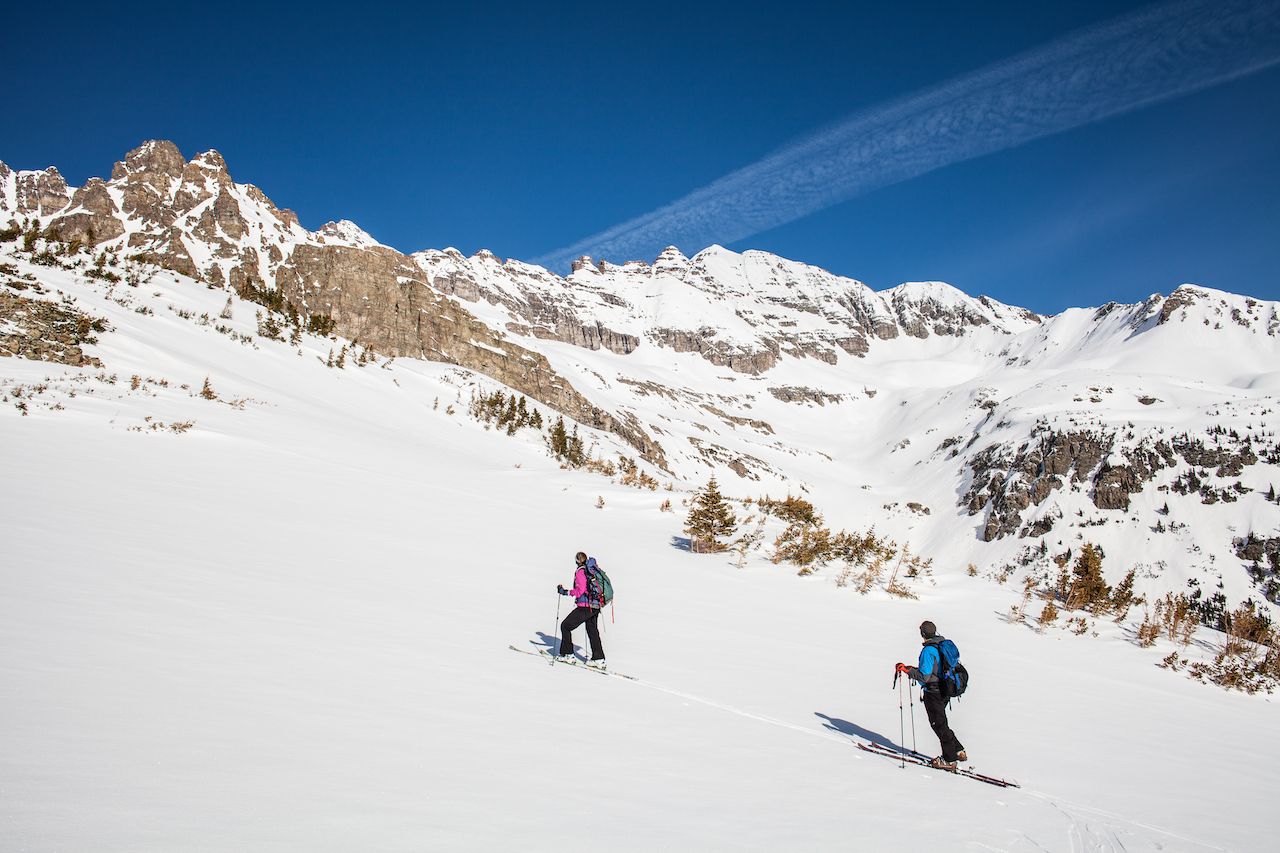
Photo: Jonas Tufvesson/Shutterstock
Backcountry skiing — There are few things more memorable than making fresh tracks on back bowls far from the resort. You should absolutely only do so, though, with the proper backcountry gear — which includes a backpack with a beacon, probe, and shovel — and the training to know how to use it. The much safer way to get into the backcountry is with a guide. They’ll provide the backpacks although you’ll also want to rent touring skis/snowboards with skins. A full-day excursion with Aspen Expeditions costs $275 per person if there are three or four in your group.
Other winter activities

Photo: The World in HDR/Shutterstock
Cross-country skiing — If your aversion to inclines keeps you off the slopes, or if you just want to get more cardio out of your days on skis, the Aspen area has more than 35 miles of cross-country (otherwise known as “Nordic”) ski trails, most accessible from the Aspen Cross Country Center. You can rent here or at the Snowmass Cross Country Center. Guided tours are available, but you can get out on your own or with your crew free of charge.
Snowshoeing — You can rent snowshoes in the same place as cross-country ski gear at the Aspen and Snow Cross Country centers noted above. The Aspen Center for Environmental Studies (ACES) also leads snowshoe tours on Aspen Mountain, Snowmass, and through the Ashcroft Ghost Town. This is a great way to get some Nordic exercise and learn about environmental efforts and ecology in the area.
Tubing — The Snowmass Tubing Hill is open throughout the winter and offers a fun alternative — or bonus — to a day of skiing. A dedicated lift brings you to the top, then it’s up to you to hold on as you careen down an iced track that, difficulty wise, falls somewhere between childhood sledding hills and an Olympic luge track.
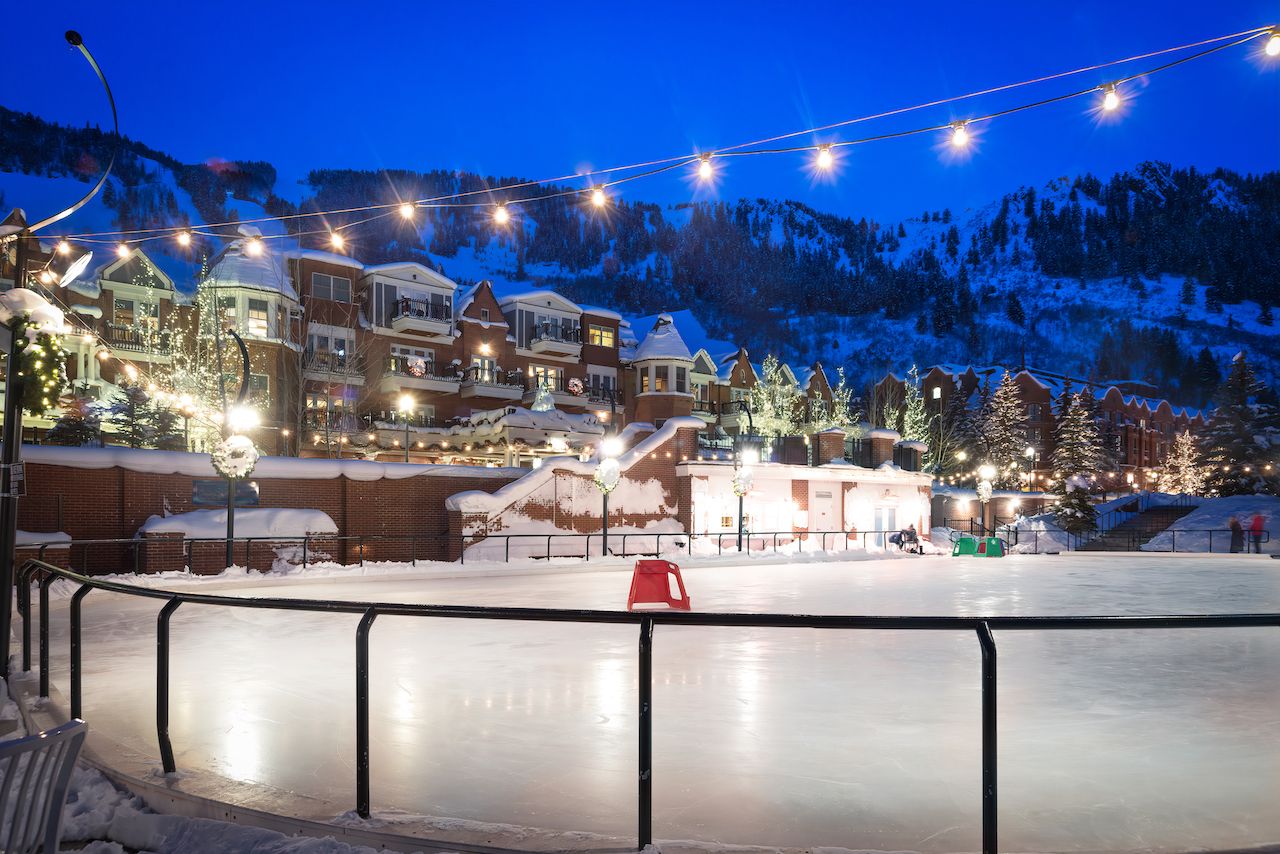
Photo: Jim Mallouk/Shutterstock
Ice skating — An ice rink sits in Aspen proper adjacent to the transportation center, operated by CP Burger and Ice Skating, because no two things could be better together. The Aspen Ice Garden is also located downtown. And at the base of Aspen Highlands, get your indoor skate on at the Aspen Recreation Center.
Yoga and pilates –If you’d rather stay warm while working up a sweat, you’ll find no shortage of yoga and other studio fitness classes in Aspen. Shakti is your best bet for a session while you’re here. The studio offers multiple classes per day throughout summer and winter. Also, few exercises fit better into the ski lifestyle than Lagree Method Pilates. Built around long holds and HIIT training, Ritual’s style is unique in the Roaring Fork Valley. A drop-in session is $35, and a weekly pass is $75.